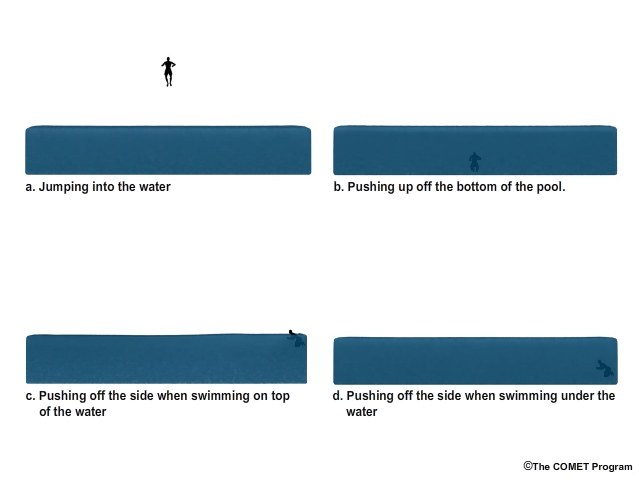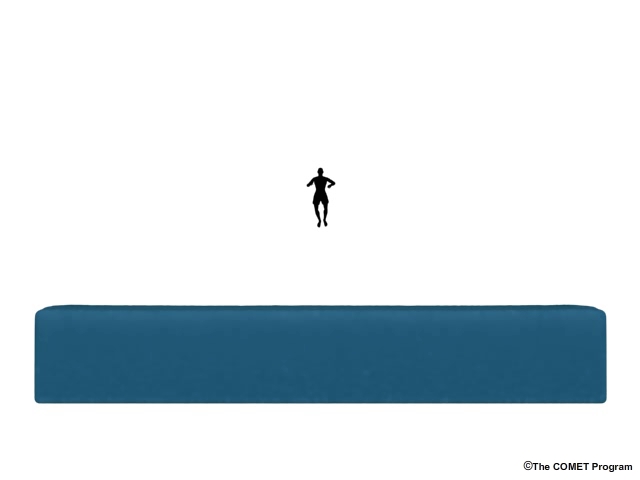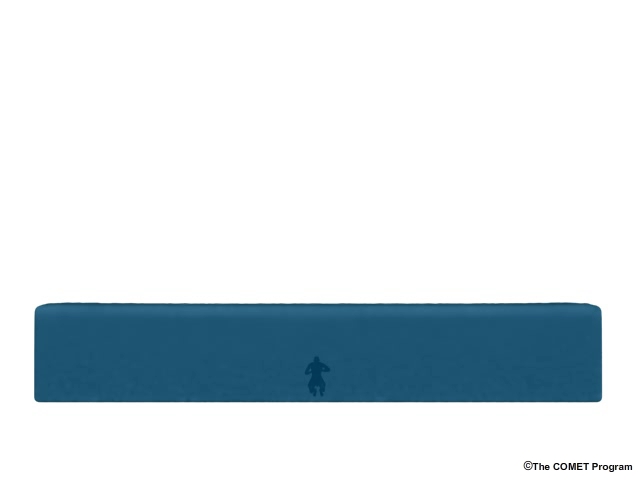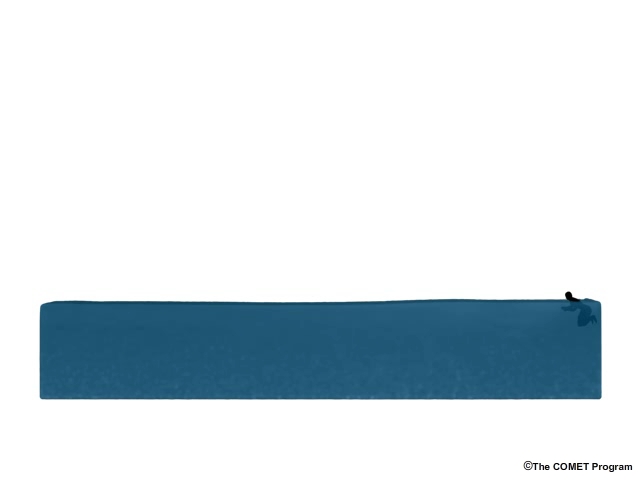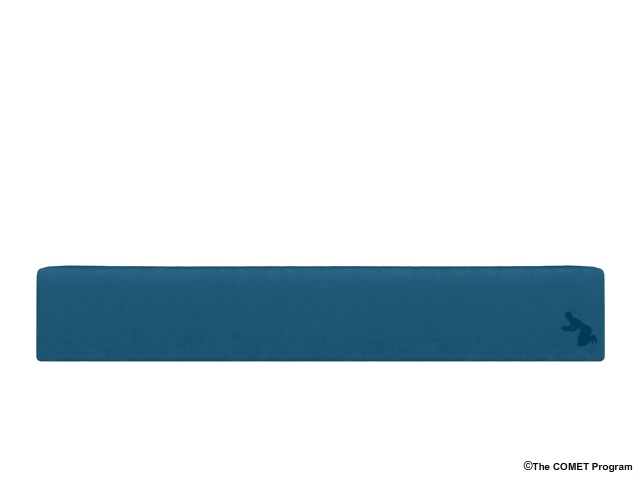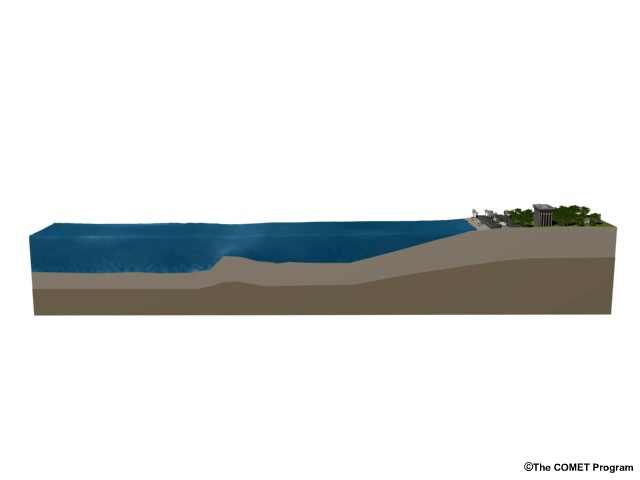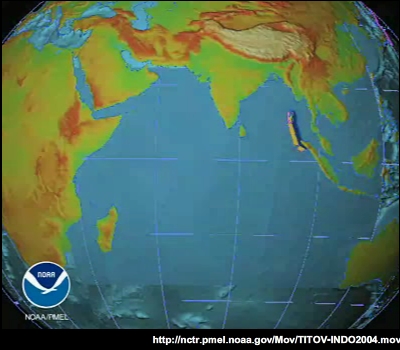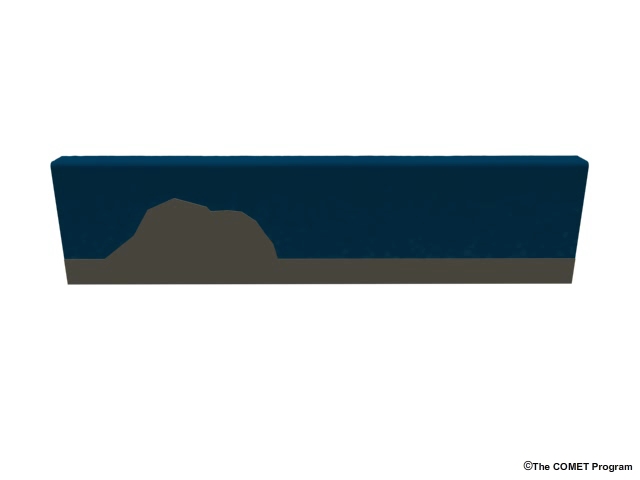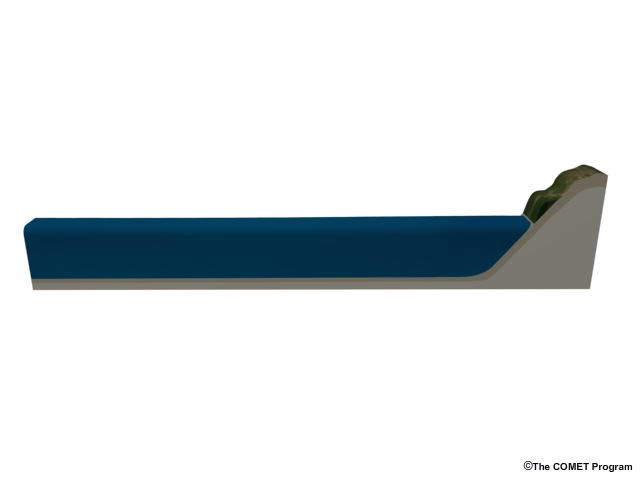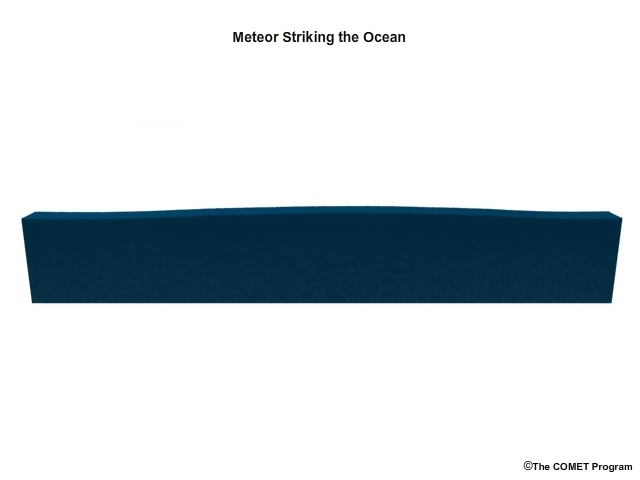Produced by The COMET® Program
Making Waves
Tsunamis are very unusual waves, but they are created in ways that are similar to waves you are more familiar with. Think about a swimming pool, for example.
Question
Which of the following kinds of movement will create waves in a swimming pool? (Choose all that apply.)
Making Tsunamis
Click each of the illustrations to see an animation that shows how waves are formed by these types of movement.
As you can see, any movement within the pool that forces water to move will also create waves on the surface of the water. This is because the person in the water is forcing water forward, but water is also filling in behind. That water has to go or come from somewhere, and this movement generates waves throughout the pool. Each of these four types of movement can create a tsunami as well. But of course, the source must be something much larger than a person jumping into water—something much, much larger.
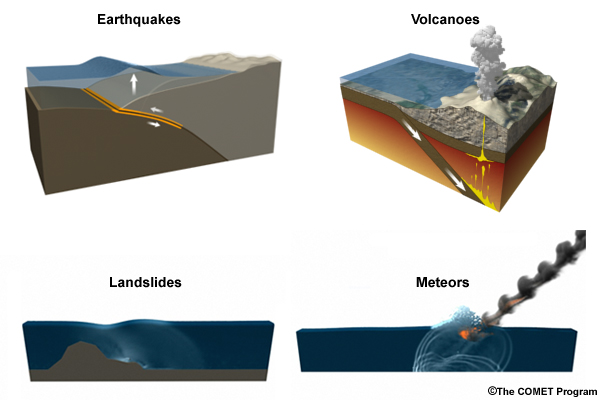
Next you will learn how each of the sources of tsunamis illustrated here lift or push large amounts of water, and about some famous tsunamis generated in these ways.
Earthquakes
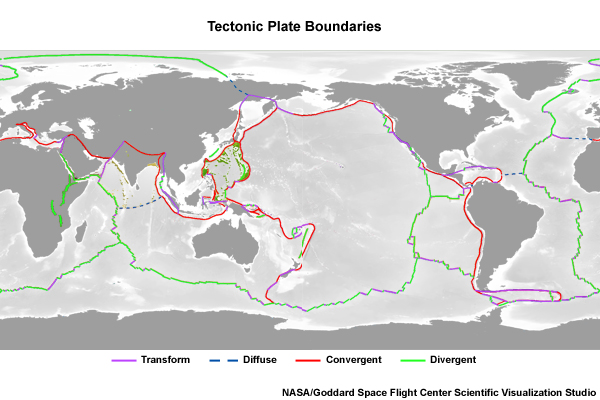
Undersea earthquakes are the most common cause of tsunamis. Earth's surface is a mosaic of thin, rigid plates that move in many directions.

Along the boundaries or faults, where one plate slides under another, the top plate often catches on the bottom plate, like two sheets of sand paper pressed together.
Eventually, when the stress builds to the point that it overcomes the friction holding the rocks in place, the fault slips, producing an undersea earthquake...
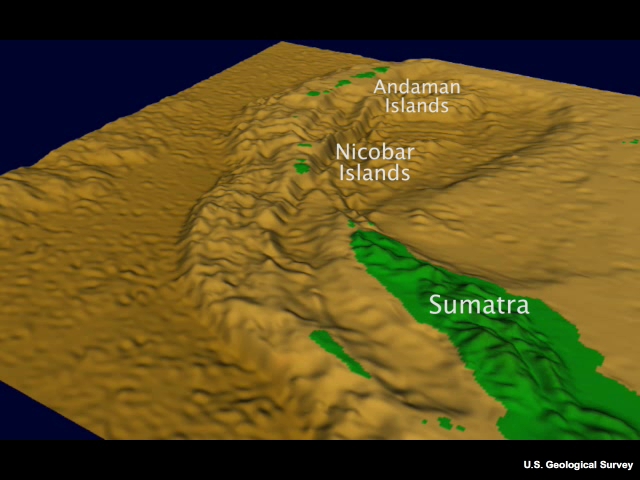
Simulation of the Indonesian tsunami of 2004. Red indicates rising ocean floor, blue indicates down-drop.
...often for many kilometers along a fault. The rising rock pushes water into a momentary ridge, which gravity immediately forces into spreading waves. At the same time, there can also be a down drop of the ocean floor, also dropping the sea surface and creating waves.
The rising rock is similar to the way a person standing up from the bottom of a pool creates waves.
The undersea earthquake that created the most devasting tsunami in recent times took place in 2004 off the coast of Indonesia (see animation above). On December 26 of that year, a magnitude 9.0 earthquake triggered a series of waves that battered coasts along Indonesia, India, Sri Lanka, and Thailand, before reaching Africa and beyond.
Landslides
Tsunami waves can also be made when sediment, rock, or ice slides down underwater slopes or falls into water from the shore.
Often triggered by a nearby earthquake, the movement of an undersea earthquake creates waves the same way a swimmer pushing off the side of a pool makes waves.
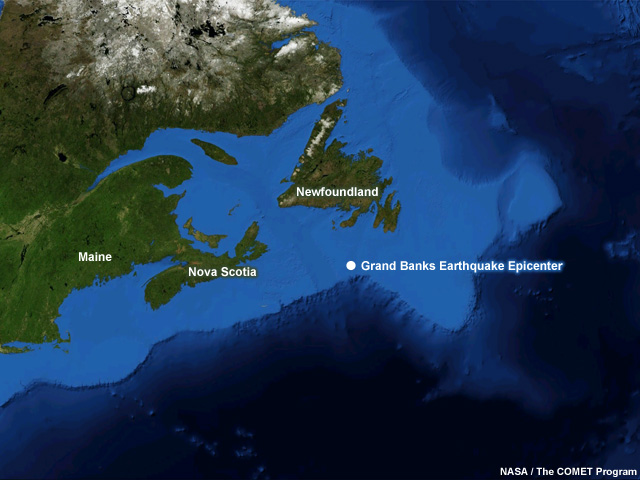
On November 18, 1929, a magnitude 7.2 earthquake off the shore of Newfoundland, Canada, triggered a massive underwater landslide 240 kilometers (150 miles) long. The slide triggered the massive "Grand Banks Tsunami."
Unfortunately for Newfoundland, the landslide happened during an uncommonly high tide and a strong storm that magnified the tsunami waves. It created waves as high as 39 feet (12 meters) in some narrow bays.
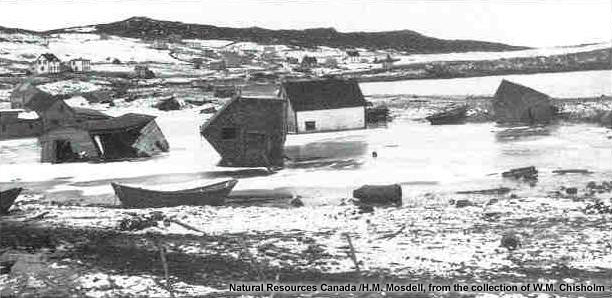
Whole homes were swept off their foundations and carried inland or out to sea. 28 people died.
Whether caused by earthquakes or heavy rains, landslides can also cause tsunamis when they spill into water from the land above, similar to the way a swimmer makes waves pushing off the side of a pool.
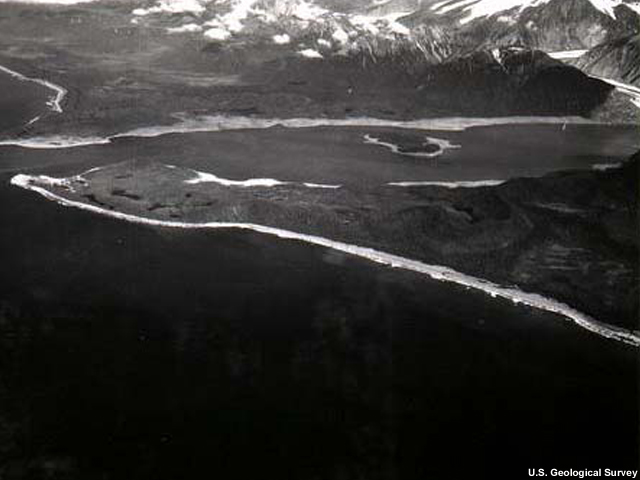
An earthquake-induced rock slide into Lituya Bay, Alaska, in 1958 triggered a splash and tsunami that climbed 1,720 feet up the mountain opposite the slide.
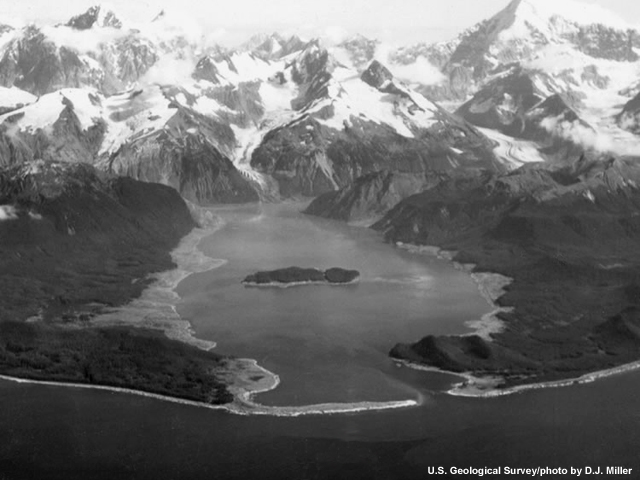
The wave wiped out all trees in its path and gave the bay a trimline that looked like a bathtub ring for many years.
Volcanoes
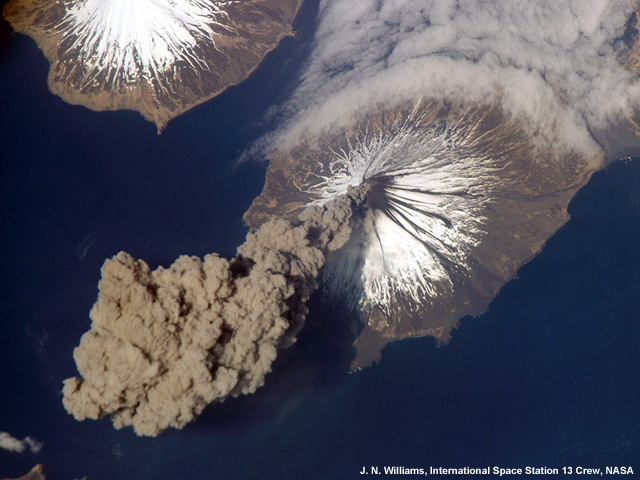
While earthquakes are more common sources of tsunamis, volcanoes can also trigger them.
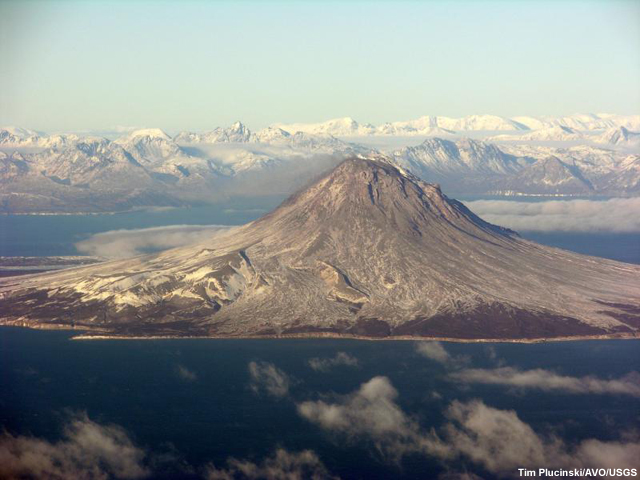
The volcano must sit in or very near the ocean to produce a significant tsunami. They can do this in several ways, including these:
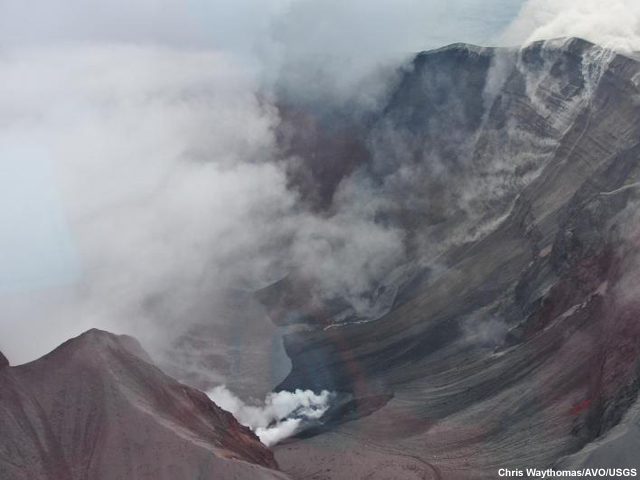
The volcanic cone can collapse into the sea in a giant landslide, called a sector collapse.
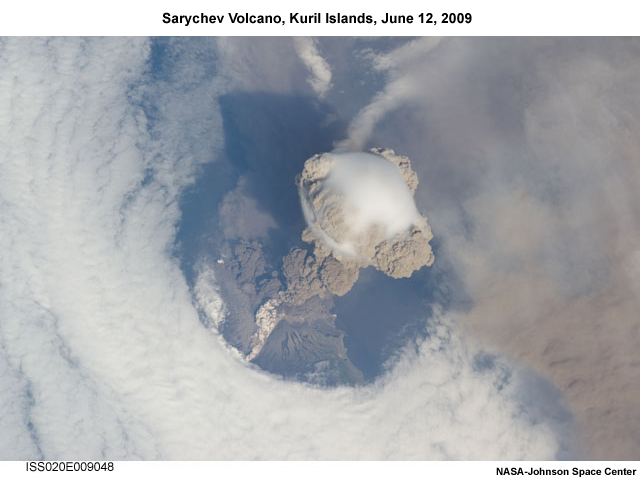
The massive amount of material in the volcanic column that explodes from the volcano can come crashing back into sea. This is called a column collapse.
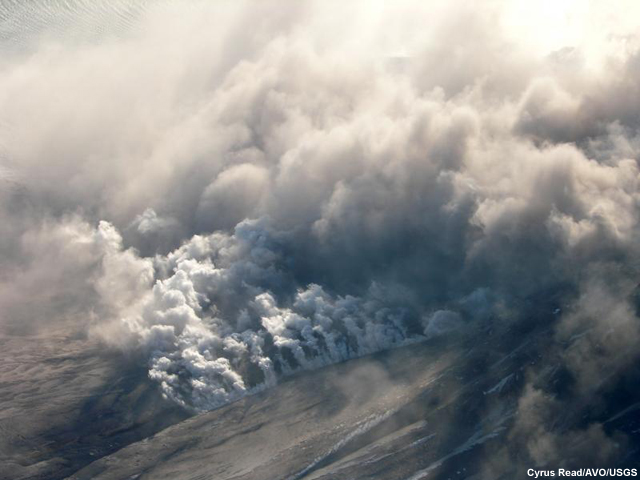
Finally, a rush of hot gas and ash in what are called pyroclastic flows can create tsunamis when they enter the sea, just as landslides do.
Scientists have documented only about 100 volcano-generated tsunamis.
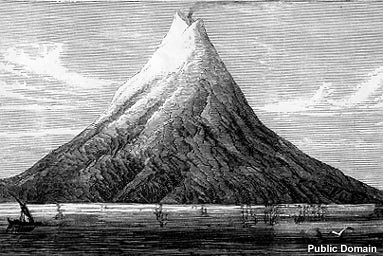
More recent examples exist, but probably the most famous of these was the column collapse of the volcano Krakatau, on August 27, 1883, in the Sunda Strait of Indonesia.
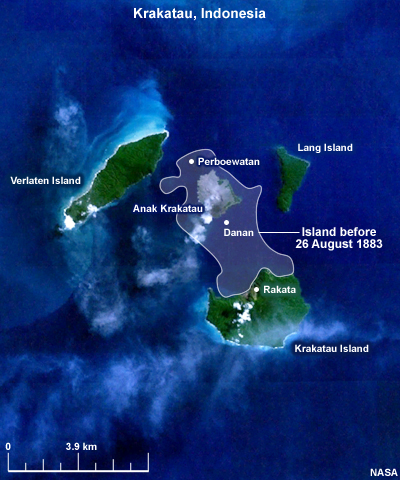
It obliterated most of the island and generated a tsunami that devastated the region with waves up to 37 meters or 120 feet high.
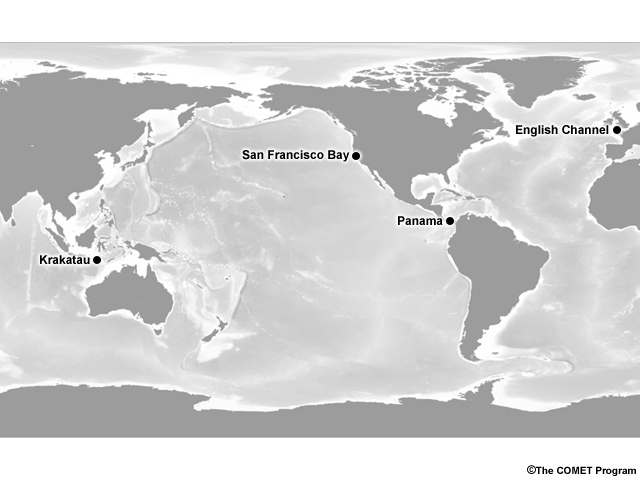
A resulting shockwave produced a smaller tsunami that that was measured in San Francisco Bay, Panama, and the English Channel.
Meteors
Meteors can make tsunami waves in the same way jumping into a pool makes waves. The bigger the person, the bigger the waves.
Medium-sized and larger meteors make tsunamis when they enter the ocean, but even a small meteor could cause a tsunami if it exploded in the air over the ocean. It is difficult for scientists to find indisputable evidence of past tsunamis caused by meteor strikes.
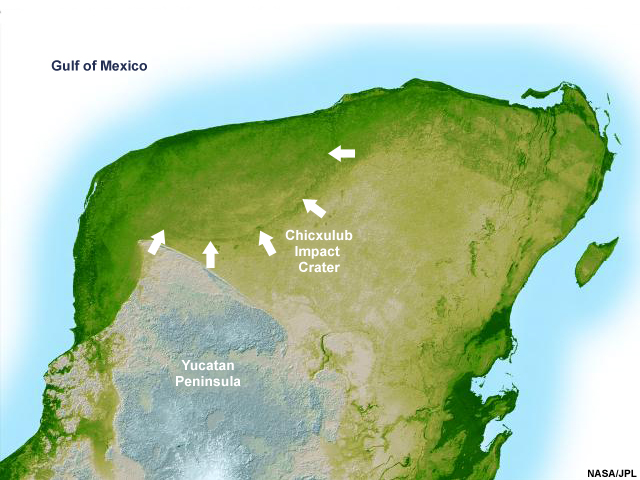
But one meteor strike that almost certainly generated a tsunami took place near the end of the age of dinosaurs—the Mesozoic—65 million years ago.
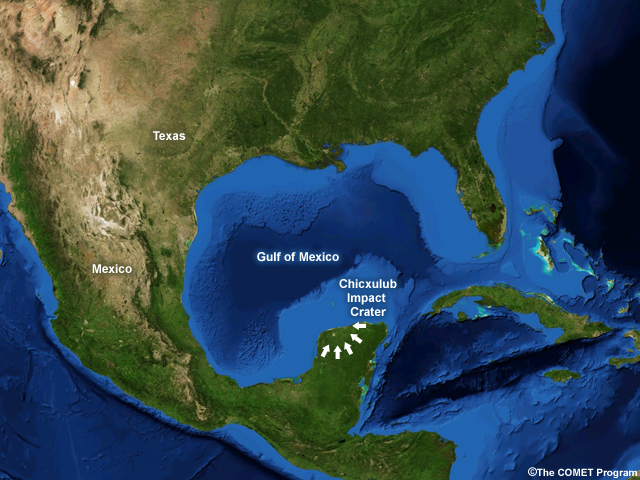
Some scientists think that coarse sediments found in Texas hint that a tsunami traveled many kilometers inland at the time of impact. Others remain skeptical about this evidence, but agree a tsunami was likely.
Summary
Like waves in a pool, tsunamis can be created by anything that moves a large amount of water. These movements include pushing upward from the bottom, or pushing from the side, either at the bottom or top of water. An object falling into the water can also create a tsunami-type wave.
Undersea earthquakes are the most common cause of tsunamis. They can cause rock to rise or drop down, moving water and creating the spreading waves of a tsunami.
A landslide can "push from the side" to cause a tsunami when sediment, rock, or ice slides down slopes underwater or along shore.
Volcanoes in or near oceans cause tsunamis through landslides, pyroclastic flows, or other volcanic material falling into the sea.
Meteors cause tsunamis similarly to how a person jumping into a pool makes waves. The larger the meteor, the larger the wave.
Click here to return to the 0 Minutes Page.
